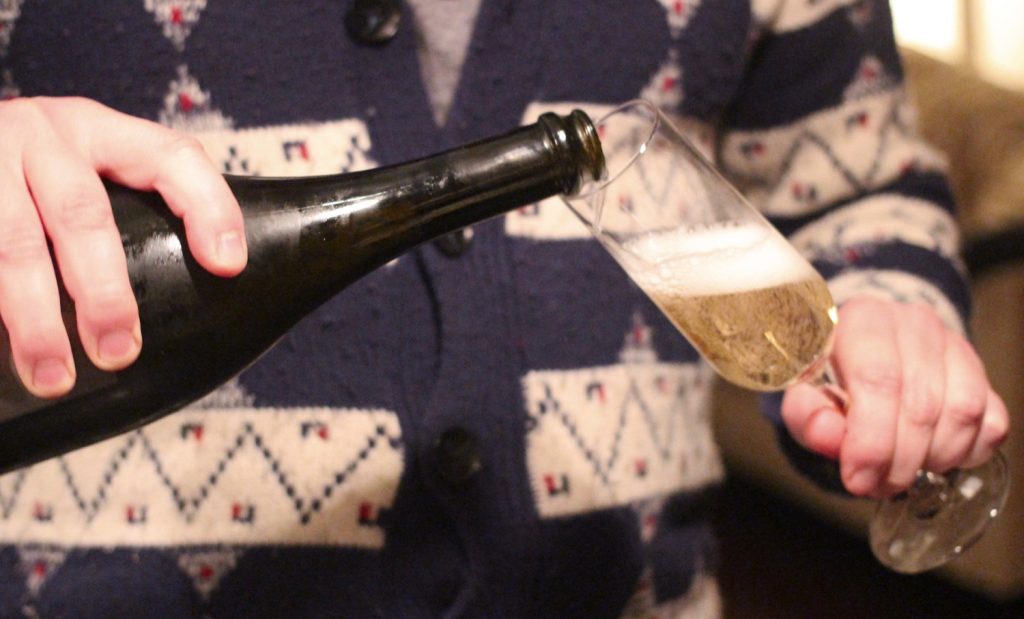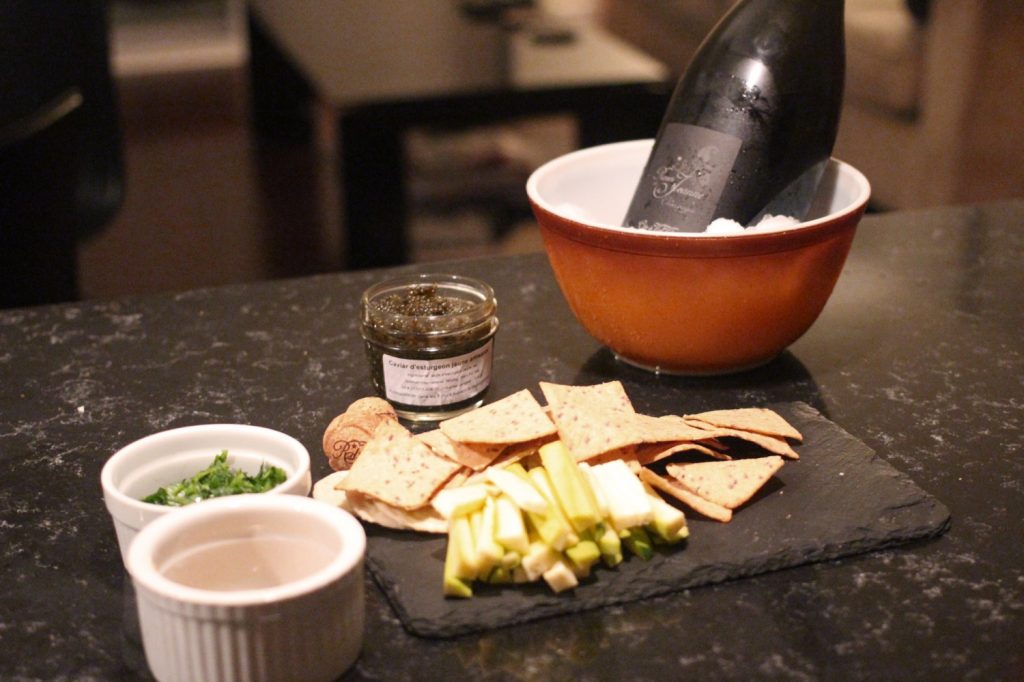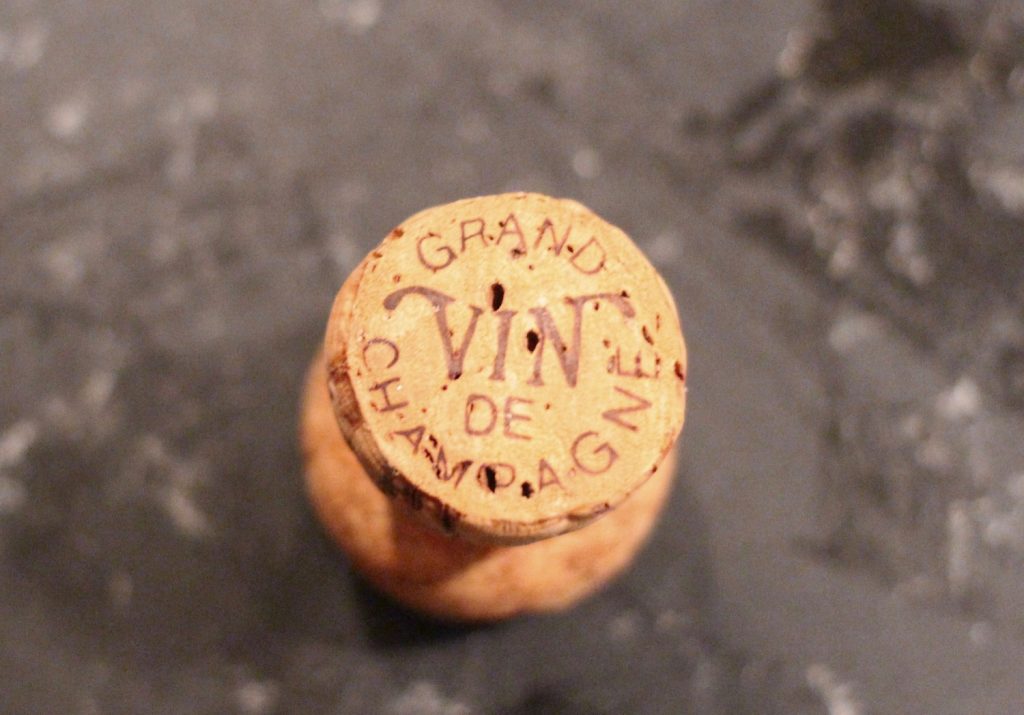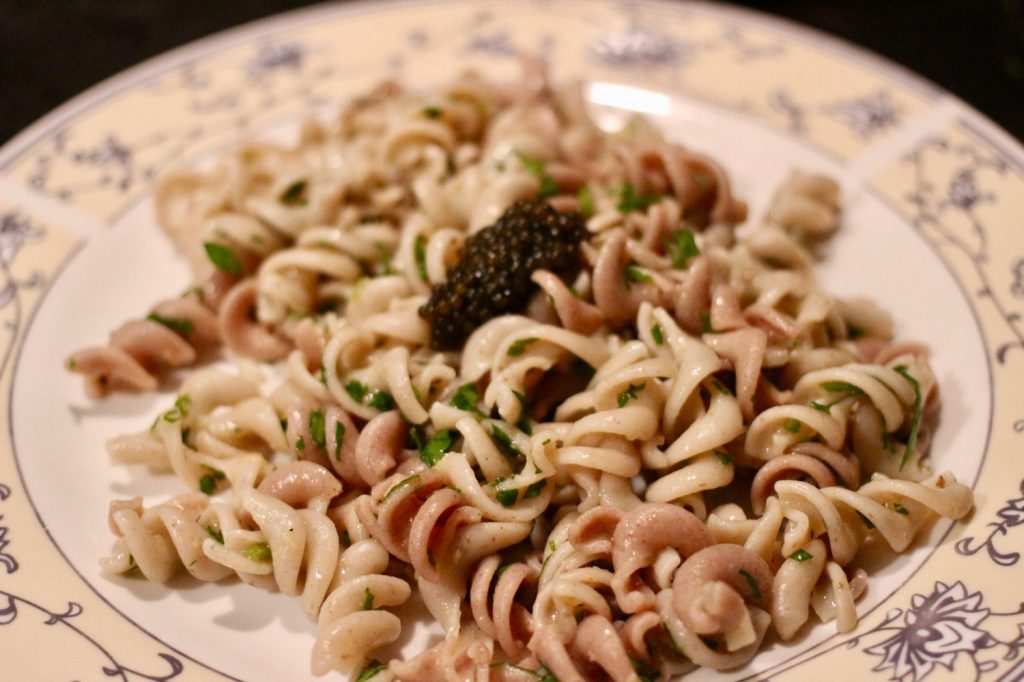
When your wine importer friend whose company motto is “No shit in my wine” says “Let’s have a Champagne and caviar night!” and offers to bring both the natural Champagne and the caviar, you don’t say no. Only an idiot would say no. I’m occasionally not an idiot.
And only a very stingy person would not offer to provide the rest of the pricey meal.

So I looked up what would complement the caviar and came up with the following:
Menu:
Roses de Jeanne Champagne, Côte de Val Vilaine, Blanc de Noir, Pinot Noir
Quebec-harvested Lac St Pierre caviar and accoutrements (crackers, cucumber slices, parsley)Lemon and garlic oil pasta topped with caviar
It was simple and satisfying. I didn’t want any strong flavours to overwhelm the caviar. And the simple pasta sauce (basically a butter sauce, but with garlic oil and lemon) was bright enough to cut through the richness.
And we got to enjoy the pure taste of the caviar alone with the appetizers:

Here’s what Decanter wrote about this Champagne:
“Each wine is from a single grape variety, single vineyard and single vintage, involving no blending of any kind. Like other contemporary, avant-garde Champagne growers, Bouchard focuses on natural viticulture and minimalist winemaking, but he’s atypically extreme in his pursuit of low yields, averaging just 4,000kg/ha, which is less than a third of the norm. This creates concentrated, densely flavoured Champagnes that can feel almost like red wines on the palate, and this is accentuated by their unusually creamy mousse, resulting from a lowered pressure (4.5 bars rather than the usual 6). However, the wines also demonstrate an elegant harmony and finesse, and in character they’re highly individual, even unique in the region.”

My friend got it in the US since it’s not available in Quebec, which made it feel even more luxurious. We have some beautiful Champagnes in Quebec, but even some of the expensive ones can give you a horrible headache, whether from all the sugar or the production methods. So do some research before wasting your money. Don’t get me started on some of the cheap Prosecco and Cava in the SAQ (some is pretty good, though!). Here’s another, more educated resource for Montrealers, but not everything recommended is certified organic, biodynamic or natural. Most producers don’t care for the certifications anyway.
The second-last point I need to make is about not serving caviar with metal spoons. Some say this can alter the taste in a bad way. Wood, mother of pearl or other inert materials are best if you want to be safe. Having not eaten tons and tons of caviar myself, and out of respect for my friend who spent most of the money on our indulgent meal, I erred on the side of caution.
The last point I need to make is about sustainability of caviar. Most caviar comes from sturgeon, which are giant fish and are very hard to farm. That means they’ve been overfished for a long time. There’s often a lot of by-catch involved and some habitat-harming fishing methods for the wild stuff. They’re very difficult to farm, too. Just ask Cornel Ceapa. The Lac St Pierre caviar is supposedly sustainable and wild, but it’s not yet certified by OceanWise. That doesn’t mean it’s not sustainable, just that it isn’t certified. Complicated, I know.
Less complicated is my pasta recipe, with or without the caviar on top:
Lemon and Garlic Oil Pasta with Caviar
Serves 6
1/2 cup extra-virgin olive oil
1 head of garlic, peel and sliced thinly
1 lb dried fusilli or spaghetti
Zest and juice of 2 lemons
1/2 to 1 tsp salt, to taste
Freshly ground pepper
150 grams very good black caviar
Chopped fresh parsley, to garnish, optional
Make the garlic oil by heating the oil and garlic slices in a small sauce pan over medium-low heat. Cook, stirring occasionally, for 20 minutes without letting the garlic turn dark brown or burn. Optionally strain out the garlic slices and reserve extra oil for later.
Bring a large pot of salted water to a boil. Add the pasta and cook according to the directions on the package, stirring occasionally so it doesn’t stick to the bottom of the pot, until al dente. There should still be a little toothsomeness to it because it’ll cook a touch more in the oil. Drain the pasta, reserving a little of the water.
Pour as much of the garlic oil as you’d like into the large pot and return to heat. Add the lemon zest and juice, 1/2 tsp salt and some freshly ground pepper. Then stir in the pasta. Taste and add salt as necessary (remember that the caviar will be salty too, so under-salting is better than over-salting).
Divide the pasta between plates, garnish with the parsley and top with a spoonful of caviar. Serve immediately.

Leave a Reply